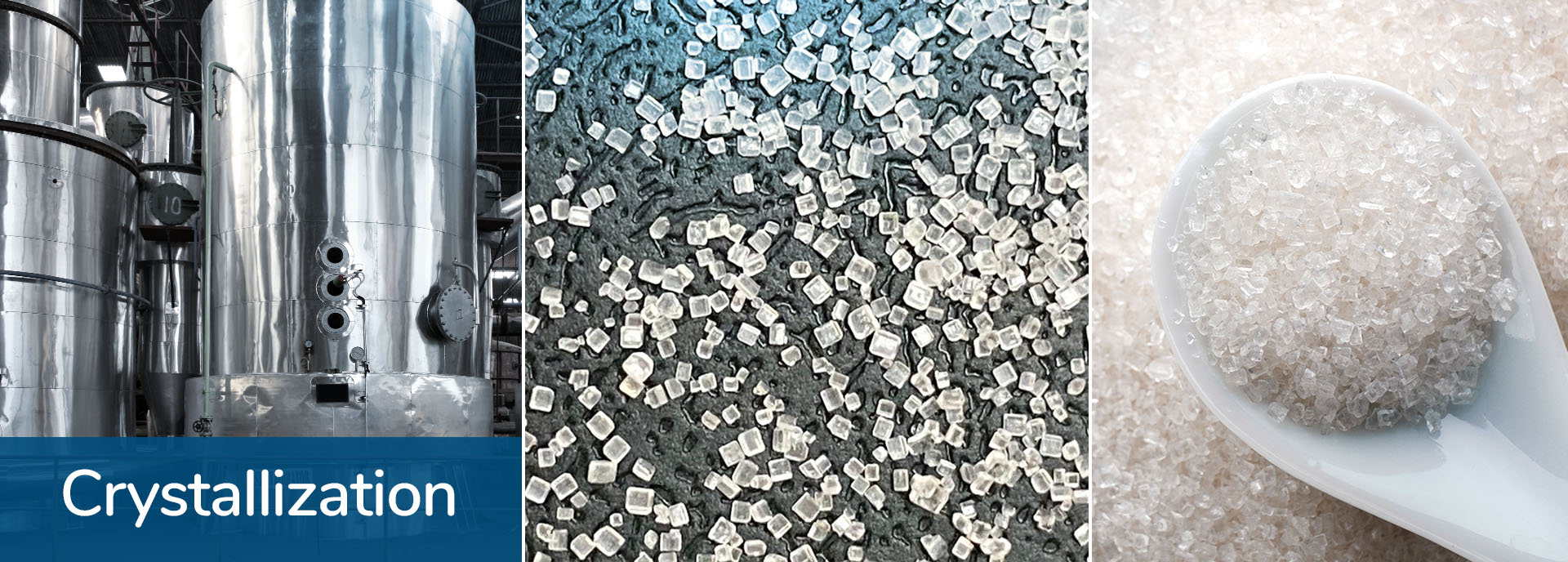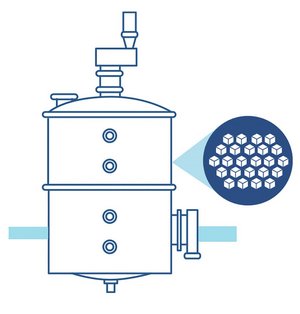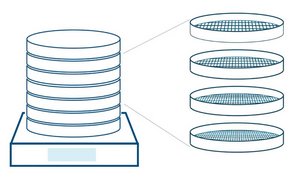
Crystallization – essential to improve quality and properties
Crystallization is a natural process of which almost all pure substances are capable. In the process, the substances enter a state of higher order in order to escape the chaos of their environment. On the one hand, this process takes place spontaneously in nature, for example when salt crystals form on evaporating pools of seawater or when lava solidifies and forms basalt columns. On the other hand, both in the chemical-pharmaceutical industry and in the food industry, crystallization is specifically brought about and controlled in order to obtain the desired active ingredients, drugs and foodstuffs in the desired quality.
Generally, crystallization is used here for purification, separation and extraction of the desired raw materials. Crystallization is also a quality-determining process in sugar production and refineries. Effective and efficient crystallization ensures high quality and safe production.
In order to implement the crystallization process in its time sequence in the best possible way, important points must be taken into account at the same time
- Right amount: Accurate dosing of ingredients, including sugar, is crucial to achieve the desired yield and quality of the final product. Precise quantity balancing is important to achieve the desired crystal properties.
- Right timing: The timing of the addition of additives or the implementation of certain steps in the crystallization process can be crucial. This may include control of temperature, stirring or other parameters to optimally control the process.
- Right concentration: The concentration of the sugar solution, indicated by the Brix value, influences crystal formation and growth. Optimum concentration leading to the desired crystal structure and quality should be carefully determined and monitored.
- Correct particle size and distribution: The particle size and distribution of sugar crystals have an impact on the texture and quality of the final product. Appropriate control of crystallization conditions, including mixing and the rate of crystal growth, can help achieve the desired particle size and distribution.
- Right quality and high stability of the suspension: The quality of the materials used, including the sugar and other ingredients, is important to ensure optimal crystallization. In addition, the stability of the suspension, which is the balance between dissolved.
- avoidance of spontaneous crystallization: Uncontrolled spontaneous crystallization outside the desired process can lead to undesirable effects. It is important to create suitable conditions to enable targeted crystal formation while avoiding uncontrolled crystallization.
To increase efficiency, improve quality and maximize yields during the crystallization process, we offer a diverse range of products:
- For a uniform sugar growth, we recommend our KEBO SLURRY. Slurry is a mixture of denser solids suspended in a liquid in which they are not soluble. A good slurry is characterized by its homogeneity, stability (in terms of sedimentation and agglomeration), desired viscosity, desired particle size and narrow distribution, flowability, chemical stability and durability. KEBO SLURRY is a ready-to-use mixture of finest, uniformly ground sucrose particles suspended in a highly viscous liquid. It thus guarantees particularly homogeneous crystal growth, which significantly increases the quality of the end product.
- KEBOSOL CA and KEBOSOL RA reduce viscosity, which enables better mixing of the solution and thus improved crystal formation. Due to their properties, they can be easily added directly to the intermediate liquids and provide energy savings, higher density and a more stable process with more stable crystallization.
- KEBO COLOUR EX: Color is one of the most important characteristics for the quality of sugar, as it is directly related to its purity. Coloring substances of the molasses and other impurities may remain on the sugar crystal after crystallization. KEBO COLOUR EX is able to destroy the color molecules during crystallization and lighten the sugar.
- We also recommend our KEBO DS at this point: It is a highly effective scale preventer or antiscalant, for preventing scaling in evaporator stations in the food industry and thus starts before the actual crystallization process and keeps it stable. This leads to significant energy savings.
Essential measured values in the crystallization process: For perfect quality and highest yield

In the pursuit of optimum crystal quality and maximum yield, certain measured values play a decisive role. They allow precise monitoring and control throughout the crystallization process. This allows the process parameters to be adjusted specifically and ensures efficient control.
The CV value - A look at the variation in crystal sizes
The CV value provides information about the degree of variation in the crystal size distribution in a sample. A low CV value indicates a low variation in crystal size, which is often desired in the food industry. This is because a uniform crystal size leads to a better texture and higher quality of the final product. A high CV value, on the other hand, indicates a greater variation in crystal size, which may be undesirable and may result in uneven texture or other undesirable properties of the final product. The CV value is calculated by dividing the standard deviations of the crystal sizes by the average of the crystal sizes, and then multiplying by 100.

The MA Value - The Mean Mesh Size as the key to optimal yield
The mean mesh size (MA) indicates the size of the opening of a sieve through which 50 percent of the sample crystals fall and 50 percent remain. The MA test can be used to determine which particle sizes are retained by a series of sieves. The results are plotted on a graph showing the sieve openings along a straight line. This diagram can be used to determine the MA and CV. In general, coarse crystals are easier to centrifuge and provide a better yield. Very fine crystals, on the other hand, easily pass through the centrifuge sieve and remain in the mother liquor, which must be recrystallized. This reduces the yield. Small crystals are more soluble than large crystals at the same temperature. Therefore, fine sugar is more demanding for industrial purposes
The fine dust content – quality and safety in mind
A high fine dust content is undesirable during crystallization, but cannot be completely avoided. Increased fines content may indicate impurities or incomplete separation of sugar crystals and mother liquor. In addition, a high dust content can lead to deflagration and poses a potential explosion risk. Therefore, it is of great importance to regularly monitor the level of particulate matter to ensure product quality while maintaining safety.
The products shown on our website are only a selection of our entire product range. There is no universal remedy for the rapid removal of impurities. Some can be removed well with alkaline agents, others better in the acidic range. The large variety of conceivable cleaning problems and the large number of additives, inhibitors and ready-to-use cleaning solutions offered by us make it advisable to obtain detailed advice before starting cleaning.
The same applies to inhibitors, defoamers, scale preventers, corrosion inhibitors, pickling inhibitors, etc. Depending on the plant, material, product and the type of boiler/cooling water is used, different individual challenges arise. We are well equipped for them.
Talk to us, we will be happy to help!
On request, we can analyze deposits in our laboratory and develop a cleaning strategy based on our many years of experience, taking into account the conditions on site.